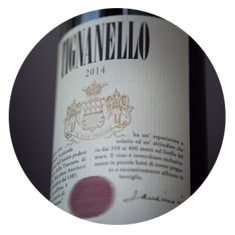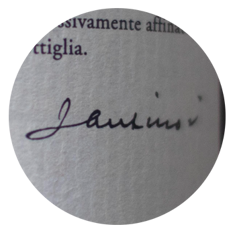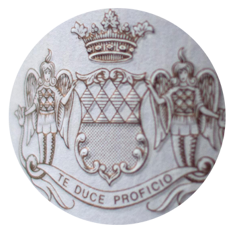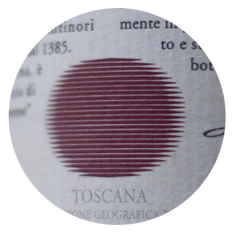Tignanello
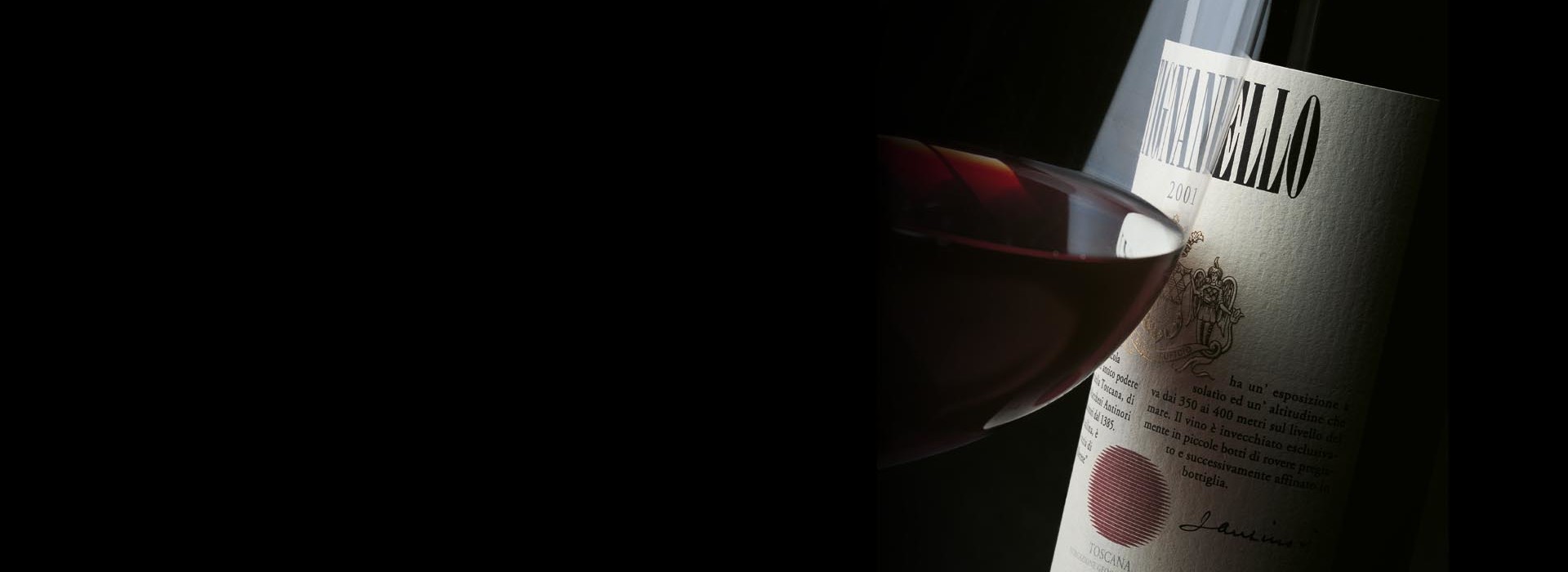
The Wine
Tignanello was the first Sangiovese to be aged in barriques, the first contemporary red wine blended with untraditional varieties (specifically Cabernet) and one of the first red wines in the Chianti Classico region that didn’t use white grapes. Tignanello is a milestone. It’s produced with a selection of Sangiovese, Cabernet Sauvignon and Cabernet Franc.
Historical Data
Tignanello is produced exclusively from the vineyard of the same name, a parcel of some 190 acres (77 hectares) with limestone-rich soils and a southwestern exposure at 1150-1325 feets (350-400 meters) above sea level at the Tignanello estate. It was the first Sangiovese wine to be aged in small oak barrels, the first modern red wine to use such non-traditional varieties as Cabernet in the blend, and among the first red wines from the Chianti Classico area to be produced without white grapes. The wine, originally called "Chianti Classico Riserva Vigneto Tignanello" (a Chianti Classico Riserva from the Tignanello vineyard), was produced for the first time from a single vineyard parcel in 1970, when the blend contained 20% of Canaiolo and 5% of Trebbiano and Malvasia, both white grapes, and the wine aged in small oak barrels. In 1971 it became a Tuscan red table wine rather than a Chianti Classico, and was called Tignanello. In the 1975 vintage the percentage of white grapes was definitively eliminated from the blend. Ever since 1982, the blend has been the one currently used. Tignanello is bottled only in favorable vintages, and was not produced in 1972, 1973,1974, 1976, 1984, 1992, and 2002.

The Wine
Tignanello was the first Sangiovese to be aged in barriques, the first contemporary red wine blended with untraditional varieties (specifically Cabernet) and one of the first red wines in the Chianti Classico region that didn’t use white grapes. Tignanello is a milestone. It’s produced with a selection of Sangiovese, Cabernet Sauvignon and Cabernet Franc.

The Design
The label was designed by Silvio Coppola in 1974 for the release of Tignanello 1971. The idea to commission this artist was discussed at an event at Castello della Sala in 1973. Silvio Coppola was an important Italian graphic and interior designer who was famous for his minimalist lighting fixtures and austere furniture but also for book cover designs for Italian publishing company Feltrinelli. Silvio Coppola was the perfect match for the job.
The Signature
Marchese Piero Antinori, the current Honorary President, decided to have his father, Niccolò Antinori, sign the label as a sign of recognition for his father’s confidence in him.
Te Duce Proficio
The historic family crest of the Antinori family
The Sun
Tignanello’s stylized “Sun” by Silvio Coppola
Climate
The season started off with a particularly mild winter with very little rain. This caused the plants to sprout much earlier than average, and accelerated all of the other phases of vegetation as well. Subsequently, the first months of summer were rather hot, whereas in August the weather cooled down, allowing for normal vegetative plant development, even if harvesting had to be scheduled a bit earlier as compared to preceding vintages. During September and October the days were hot and sunny and the nights were cool, creating temperature fluctuations which helped to guarantee a higher quality of grapes, especially with regards to sangiovese. Right from the very beginning of the vinification process it was clear that the quality of the grape bunches, and therefore of the musts, were of a very high grade. Besides the intense aromas and colors, the sangiovese and cabernet varietals differentiated themselves by their strong varietal stamping. The optimal climatic conditions permitted the harvest, which took place between mid-September and the first week of October, to be carried out in a very precise manner, with a careful selection of grape bunches.
Vinification
The grapes, especially the sangiovese varietal, benefitted greatly from a year which was particularly advantageous from the point of view of the ripening process. The excellent meteorological conditions permitted the grapes to be harvested in a particularly healthy and ripe state, thus allowing the grape bunches originating from the Tignanello vineyard to be selected according to their exposure to the sun and the plants' vigor. All of this resulted in a harvesting of clusters which were at the peak of their potential, thus arriving in the wine cellar in perfect condition. As usual, the procedures of fermentation and extraction were attended to with particular care, carrying out the subsequent operations of dèlestage and pumping over in such a way as to keep in tact the varietal aromas and the intensity of the color of the grapes. The fermentation of all the varietals was conducted at an average temperature of 27°C, without ever exceeding 31°C in order to preserve as much as possible the aromas and the typicity of the fruit. Right from the beginning the musts showed great complexity. Especially in the case of sangiovese, the outstanding characteristic varietal aromas and elegance along with beautiful color, all made it possible to foresee a truly great vintage. After the first racking, which took place when alcoholic fermentation had finished, the wines were put into barriques (oak barrels) where malolactic fermentation took place by the end of the first year. The wines were then blended, and subsequently left to age for about 12 months in barriques, where they were periodically racked and tasted, barrel by barrel, until the moment of bottling. After an additional year of bottle-aging, the wine was introduced on the market.
Historical Data
Tignanello is produced exclusively from the vineyard of the same name, a parcel of some 190 acres (77 hectares) with limestone-rich soils and a southwestern exposure at 1150-1325 feets (350-400 meters) above sea level at the Tignanello estate. It was the first Sangiovese wine to be aged in small oak barrels, the first modern red wine to use such non-traditional varieties as Cabernet in the blend, and among the first red wines from the Chianti Classico area to be produced without white grapes. The wine, originally called "Chianti Classico Riserva Vigneto Tignanello" (a Chianti Classico Riserva from the Tignanello vineyard), was produced for the first time from a single vineyard parcel in 1970, when the blend contained 20% of Canaiolo and 5% of Trebbiano and Malvasia, both white grapes, and the wine aged in small oak barrels. In 1971 it became a Tuscan red table wine rather than a Chianti Classico, and was called Tignanello. In the 1975 vintage the percentage of white grapes was definitively eliminated from the blend. Ever since 1982, the blend has been the one currently used. Tignanello is bottled only in favorable vintages, and was not produced in 1972, 1973,1974, 1976, 1984, 1992, and 2002.
Tasting Notes
Tignanello 2007 is a wine which presents itself with a great impact. To the nose this wine opens with a pleasant concentration of aromas ranging from ripe red fruit to spiciness; with hints of vanilla and toasty notes which compose a bouquet with great persistence and elegance. It is a wine of unquestionable personality, with typical characteristics which deeply bond the wine with the land where it was born, exalting and rewarding this maximum expression of the wonderfully ripened sangiovese, so particularly optimal in this harvest.
Scheda
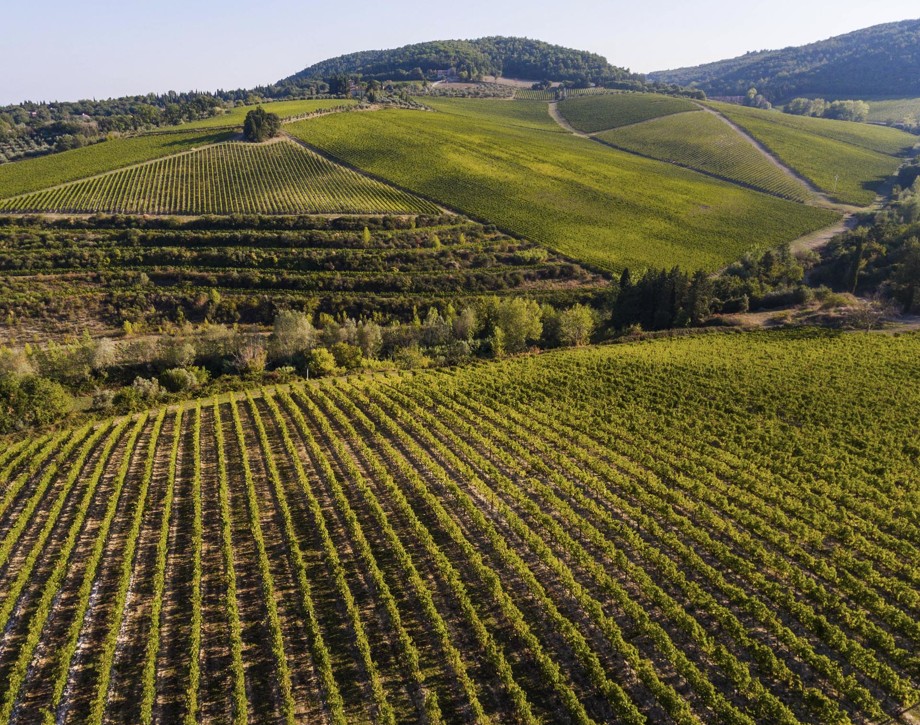
Tenuta Tignanello
The Tenuta Tignanello estate is in the heart of Chianti Classico, in the gently rolling hillsides between the Greve and Pesa river valleys. It extends over an area of 319 hectares (788 acres), of which about 165 (407 acres) are dedicated to vines. Two of the estate’s prized vineyards are on the same hillside, Tignanello and Solaia, on soils that originated from marine marlstone from the Pliocene period rich in limestone and schist. The vines enjoy hot temperatures during the day and cooler evenings throughout the growing season. The estate’s two signature wines, Solaia and Tignanello, are produced from these vineyards and have been defined by the international press as “among the most influential wines in the history of Italian viticulture”. According to Marchesi Antinori, Solaia and Tignanello are an ongoing challenge and a never-ending passion. The Tignanello estate has vineyards of indigenous Sangiovese grapes as well as some other untraditional varieties such as Cabernet Franc.
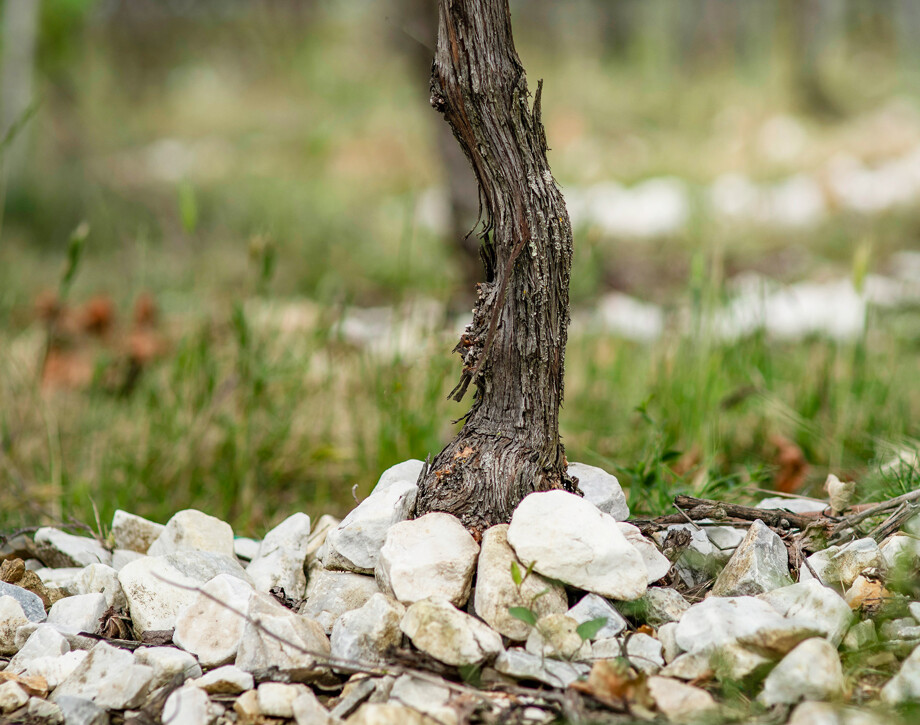
Soil
Calcareous rocky soils with alberese (marl limestone) and marl.
